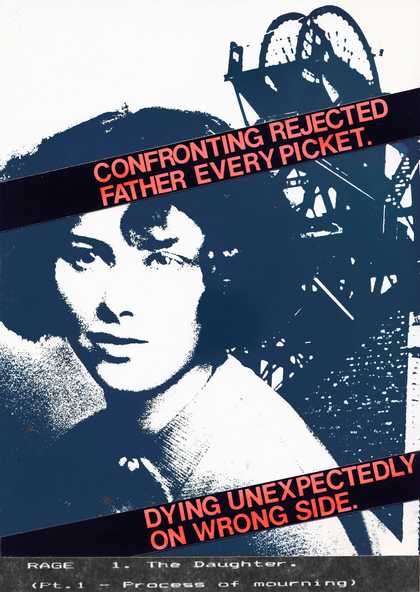Using photomontage, Yates reflects on her mourning process over the death of her mother
Yates’s four-part photographic installation references Sigmund Freud’s tracings of the mourning process: Pain, Rage, and Gaze, and a further one – Continuum. The sections reflect Yates’s own stages of grief through her use of photomontage, with short texts taken from her journal entries of the time, resembling news headlines.
Yates’s work is described by authors and critics as a feminist art project. This is because it challenges us, the viewer, by addressing questions about sexuality and our social and historical positioning in our personal relation to images. The work invites us to identify with the process of representation and to participate in the production of our own meanings. This reflects Yates’s statement that ‘the work does not have a viewpoint: that belongs to the viewer’.
The artist’s mother was a miner’s daughter. She died during the miners’ strike of 1984–5, described in the press as ‘changing Britain forever’. Yates says that her mother ‘remembered the 1921 General Strike which involved the miners (including her father) and the Spanish flu pandemic (which decimated the family) but she would never speak of that time.’
Yates presented The Only Woman to the public at the end of the miners’ strike of 1984–5. It was shown in the ground-breaking exhibition Difference: On Representation and Sexuality at the ICA, London.

